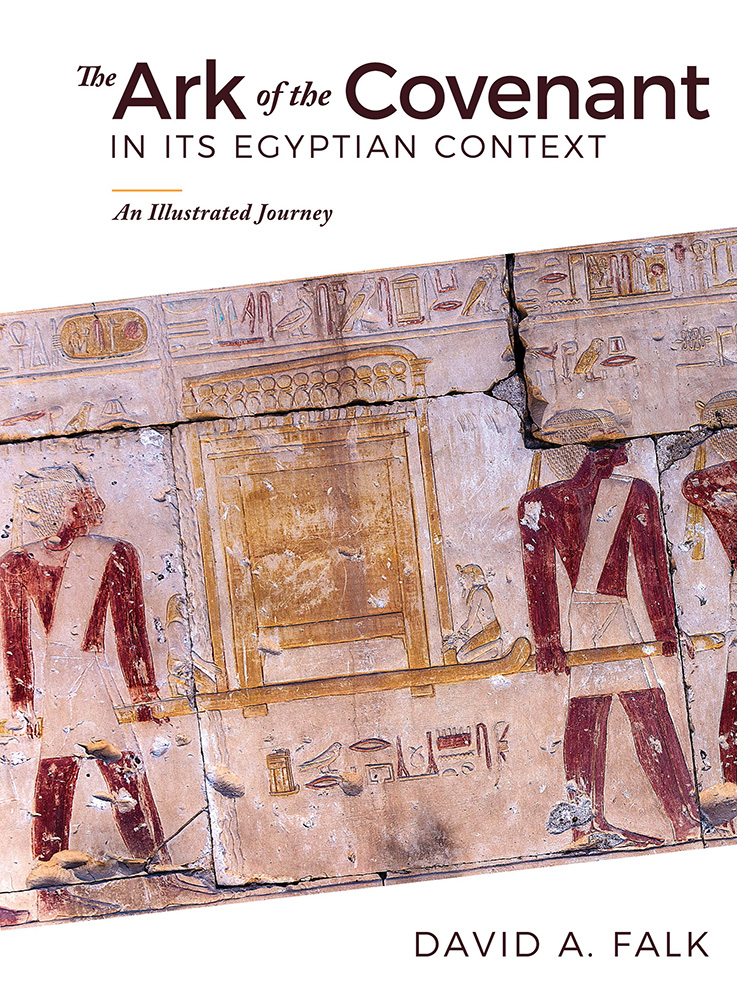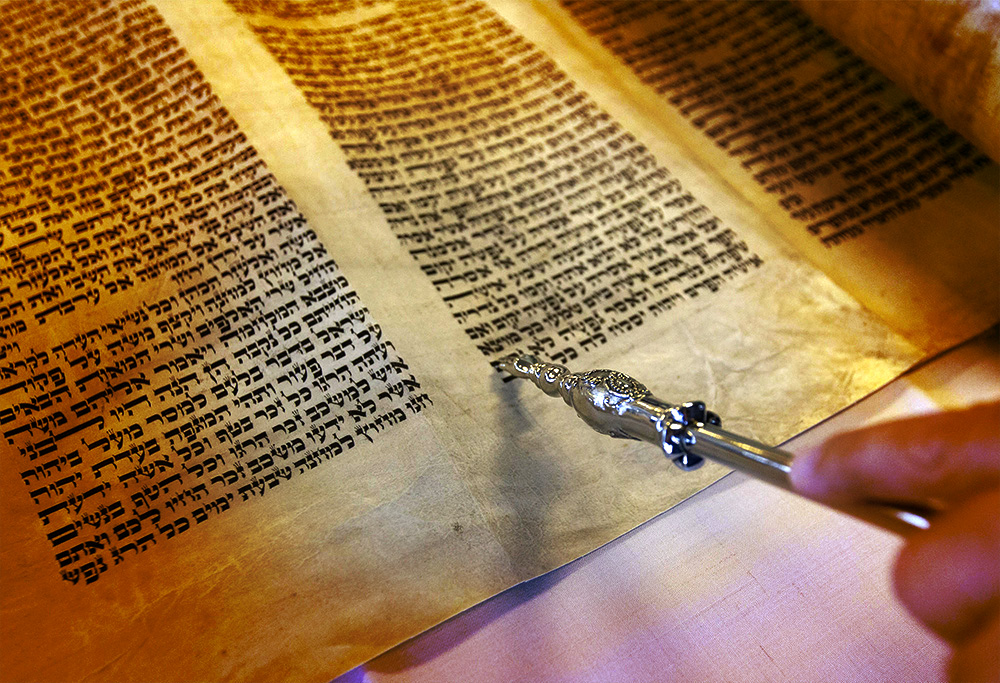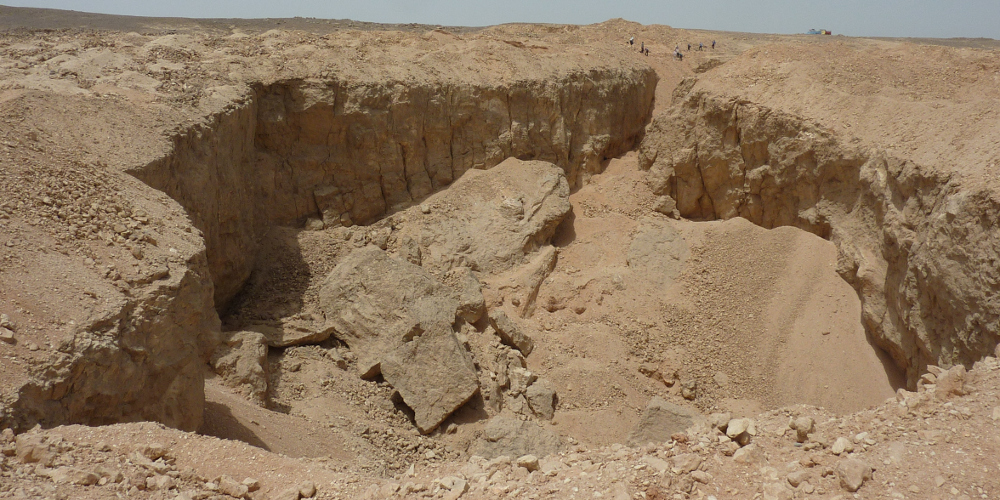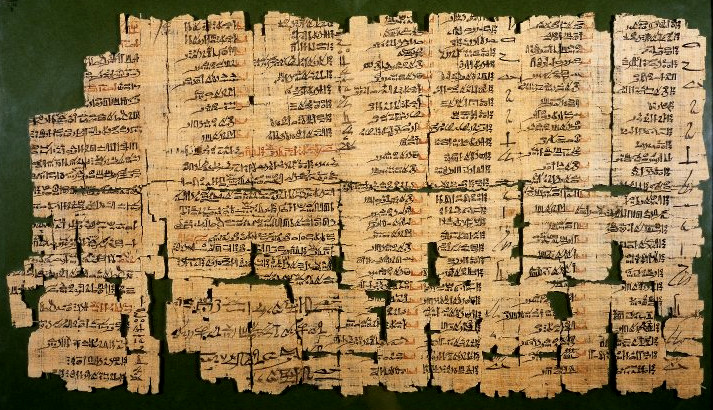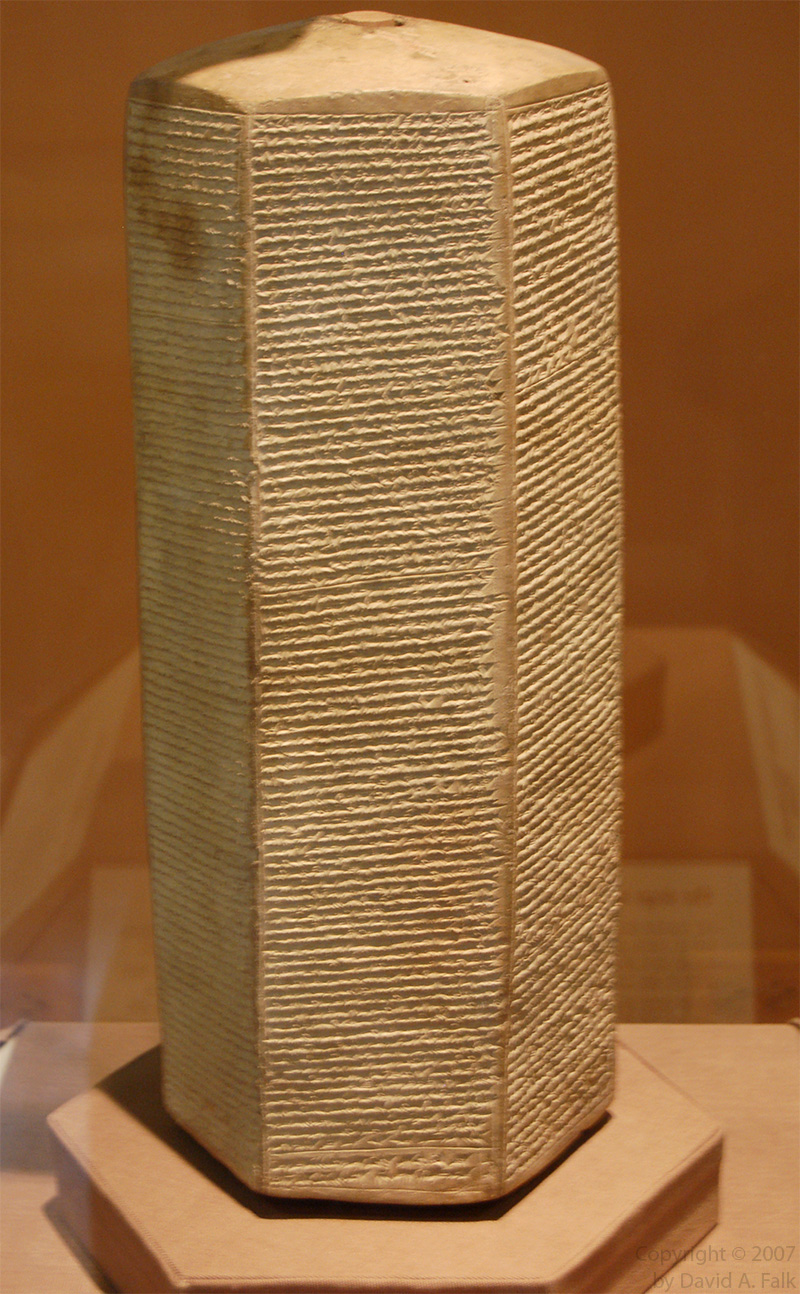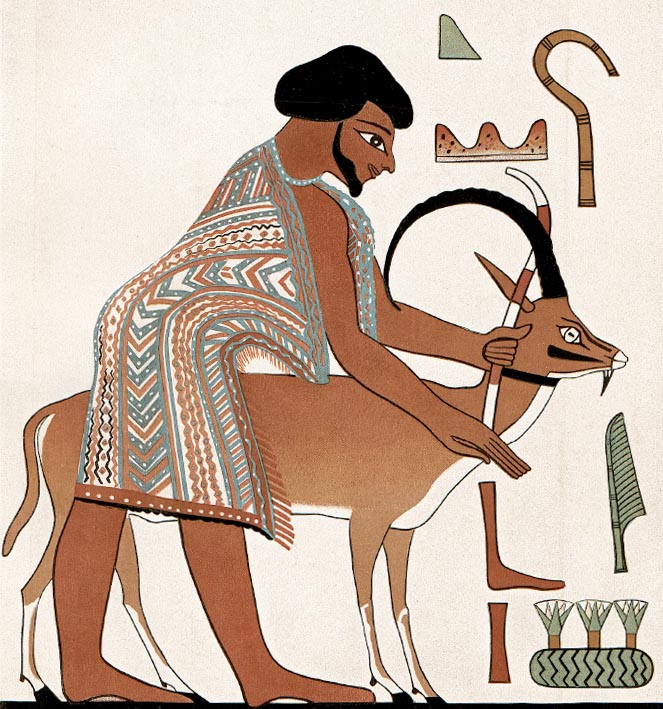I am happy to show you all the cover for my forthcoming book, The Ark of the Covenant in its Egyptian Context: An Illustrated Journey. The release date is set for December 1, 2020. And you can pre-order it now on Amazon. Pre-order on Amazon
Category: Bible
Understanding Genealogies in the Bible (part 2)
Toledot, or Hebrew genealogies, often operate under slightly different rules than Western genealogies. Two weeks ago we discussed a bit about how genealogies work in the Bible. However, we can say more, which is why a part 2 is necessary.
Rules of the Toledot
Unlike what is commonly found in western genealogies, toledot often exclude intermediaries. These intermediaries were descendants that either did not reproduce or weren’t significant to the overall outcomes. Let’s take for example the toledot of Moses in Exodus 6:
And these are the names of the sons of Levi according to their generations: Gershon and Kohath and Merari; and the length of Levi’s life was one hundred and thirty-seven years. The sons of Gershon: Libni and Shimei, according to their families. The sons of Kohath: Amram and Izhar and Hebron and Uzziel; and the length of Kohath’s life was one hundred and thirty-three years. And the sons of Merari: Mahli and Mushi. These are the families of the Levites according to their generations. And Amram married his father’s sister Jochebed, and she bore him Aaron and Moses; and the length of Amram’s life was one hundred and thirty-seven years. [Exod 6:16-20]
Exod 1:5 states that 70 men entered Egypt who descended from Jacob. When the Israelites left Egypt, those 20 years or older were counted to number at least 603,550 according to the weight of the half-shekel redemption offering [Exod 38:26]. If we look at the generations of the toledot of Moses, we see three generations being born in Egypt. Levi begat Kohath, Kohath begat Amram, and Amram begat Moses. Many of the toledot from this period in the book of 1 Chronicles are quite short, usually three or four generations. The text makes it clear that Exodus 6 is naming the “families of Levites” or clans and not specifically the individuals involved per se.
The Unconventional Lifespans
If we took the toledot at face value, this becomes a demography problem. According to the CIA World Factbook 2016-2017 edition, the country with the highest fertility is Niger with 6.76 children/woman. So assuming that each person of the seventy original descendants of Jacob had both a wife and children, then it would take between 6 and 7 generations to produce a population of around 500,000.
The other thing one might notice is the unconventional length of the lifespan of the Moses’ ancestors. Levi lived to 137, Kohath to 133, and Amran to 137 years. There does not appear to be anything symbolic about these numbers. These numbers are not numerologically significant factors; such as 7, 12, or 40.
Now, I wouldn’t say that people living to 137 years is out of the question. Early calendar systems had idiosyncrasies that could account for some extended dating. Not to mention that the wages of sin could have accelerated death by diminishing potential lifespans.
But I think that a simpler solution is also possible. In many toledot, the chronicler may not be using the length that the person was alive. For example, in Exod 6:20, the chronicler says that the “years of the life of Amran were seven and thirty and a hundred.” The “years of the life of” may refer to living memory, which is the years that others have a living memory of the person. This would abbreviate the genealogy for the authors while using a definition for life that is part of the repertoire of the ancient Near East.
Understanding Genealogies in the Bible (part 1)
About 15 years ago I led a small Bible study group. We would take a book of the Bible and study it one chapter at a time. When I came to the end of the book, I would ask the group, “Which book do we study next?” And of course, nobody wanted to decide what the next book would be.
So, I would say “If nobody can decide what book we are going to study next, I get to pick. And my choice would be the book of Numbers with all those lovely genealogies.” No sooner would I say that, and someone would propose a book (a different book) to study.
The typical Bible reader has an aversion to genealogies. Modern readers often see genealogies as the “boring bits” that one needs to buzz past to get to the interesting stuff. I think that this outlook is unfortunate because genealogies were the literary device of choice that ancient writers used to give us the really juicy info.
The Purpose of Genealogies
In the ancient Hebrew, genealogical lists are called toledot. An important consideration is that toledot are not quite the same as what we call a “genealogy” in the West today. Knowing the technical difference between a toledot and a genealogy can help us navigate the Hebrew Scriptures.
In the West, genealogies normally trace the ancestors of a person going as far back as possible. Hebrew toledot sort of do the opposite. Toledot start with a well-known person and attempt to trace that person’s descendants. The purpose of a toledot is not to establish pedigree as much as it is to show the person’s posterity. So, in effect, the ancient Israelites believed that the actions of a person would have outcomes that would manifest generations down the line.
Ancient writers used these toledot for didactic purposes. Often the toledot sets up the historical context, but the writer could also use it to convey a moral lesson. Most western genealogies lack this didactic component.
The Genesis 5 Toledot
One example of a toledot comes from Genesis 5 where we find the posterity of Adam (of the Garden of Eden infamy). We see in Genesis 5 the following structure:
And <Person 1> lived <Number A> years and became father of <Person 2>, And <Person 1> lived <Number B> years after he was father to <Person 2>, and he had other sons and daughters. So all the days of <Person 1> were <Number A+B> years and he died.
The writer repeats this structure from Adam to Jared six times. Then on the seventh generation, Enoch doesn’t die but it taken away instead [Gen 5:24]. This disruption of the normal (intentionally monotonous) pattern using antithesis shows what this toledot is really about. The subject is that mankind is now beset with death without relief.
Adam sinned and fell from grace largely causing the mess on what we call planet Earth. God created Adam in a perfect world that had no death. The toledot in Genesis 5 is to show the reader Adam’s posterity–his actions which caused death to rule unchecked.
Who’s Who
The other thing that genealogies can do is establish why something happened. In 2 Samuel 6, Uzzah was struck dead by God after touching the Ark of the Covenant [2 Sam 6:7]. The difficulty here is that touching the Ark was not in and of itself an offense. Priests had handled the Ark several times in its history with impunity. So what gives?
The first thing is that the reader may notice is that the Ark was placed on an ox-cart [2 Sam 6:3], which was forbidden since it was to be carried only by its poles [Exod 25:14]. But this alone probably would not have resulted in condign action.
The other thing we are told is the genealogy of Uzzah in verse 4. He was the son of Abinadab. Abinadab was the son of Jesse and brother of King David [1 Sam 17:13, 1 Chr 2:13], which makes Uzzah the nephew of the king. Moreover, this makes Uzzah from the tribe of Judah. Only Israelites from the tribe of Levi and of those only descendants of Kohath were permitted to carry the Ark [Num 4:15]. Although one offense may have been overlooked, two impious actions were seen as irreverence [2 Sam 6:7].
Toledot can give the modern Bible reader fascinating information if we take the time to try to understand them.
Crime and Punishment in Ancient Egypt
Egyptian society generally had no laws. Instead, the Egyptians governed their society by an ethical concept called Maat, “order.” This concept led to a pretty permissive society. If an act did not disrupt the community and was not an act against the king, it was generally permitted.
Punishment for Crimes
We have to remember that Egyptian ruled by a brutal military dictatorship. So magistrates maintained order by force and corporal punishment. Acts against the king were usually met with the death penalty. But for lesser offenses beatings were commonplace.
However, magistrates did not only use beatings to punish crime but also as an interrogation method. The way the Egyptians used beatings was that they would beat you first before asking any questions, ask their questions, then beat you again if they felt like you needed it. Interrogators only believed that they got honest answers when an interrogation first started with a beating.
Egyptian Jails
If the magistrate or king could not decide what to do with you, they would send you to jail. In Genesis 39, we read about Potipher’s wife falsely accusing Joseph of rape. As a slave, this crime would earn more than a beating. But if the accuser was less than reputable, it would not necessarily warrant the death penalty. Perhaps, Potipher understood the character of his wife. So Joseph was sent to Egyptian jail [Gen 39:20].
Now, the Egyptian concept of jail might not be what you expect. The Egyptians used their rock quarries as jails. Quarries existed that were the operated by skilled professional stone cutters [see featured image]. However, quarries were also used as prisons.
Egyptian jails had no doors, bars, or walls. Succinctly put, these jails needed no restraints. Quarries typically were found in remote locations with very little water. If anyone tried to escape, they would be subject to the heat of the desert and die of dehydration in short order. This was strong incentive to stay and do one’s time.
Dreams and their Interpretation
The Egyptians believed that dreams could foretell the future. And as such the interpretation of dreams played an important part of ancient Egyptian culture. In fact, the interpretation of dream persists among modern Egyptians today.
The Dream Book
Two so-called “dream books” have survived from ancient Egypt. Perhaps the most interesting is Papyrus Chester Beatty III, a fragmentary papyrus written in hieratic. This papyrus is a catalog of dreams and their interpretations.
The format of the interpretations is quite formulaic. All the dreams are predicated upon you appearing your dream. The dream is then summarized. The book then gives a one-word appraisal of the dream, either “good” or “bad.” And then the book predicts what’s going to happen to you.
A couple of examples from the dream book are as follows: “[if a man sees himself in a dream] seeing the god who is above–good; it means much food.” Or, “[…] seeing himself [in] mourning–good; the increase of his possessions.” Or, “[…] looking in a deep well–bad; his being put into prison.” Or, “[…] seeing an ostrich–bad; harm befalling him.”
The content of these dreams were not limited by propriety or societal mores. Dream books provided interpretations for dreams involving drinking wine, engorged genitals, and copulating with one’s mother. Also, some of these dreams could be quite cringe worthy, such as, drinking one’s own urine or blood, or copulating with a pig. Counter-intuitively, the dream books considered some of these noxious dreams to have good outcomes.
Joseph and Dream Interpretation
One cannot refer to dream books without being reminded of the dream interpretations found in the Bible, most notably those interpretations done by Joseph. Joseph was sent to prison where he interpreted the dreams of his fellow prisoners. Joseph interpreted the dream of a cupbearer:
So the chief cupbearer told his dream to Joseph, and said to him, “In my dream, behold, there was a vine in front of me; and on the vine were three branches. And as it was budding, its blossoms came out, and its clusters produced ripe grapes. Now Pharaoh’s cup was in my hand; so I took the grapes and squeezed them into Pharaoh’s cup, and I put the cup into Pharaoh’s hand.” Then Joseph said to him, “This is the interpretation of it: the three branches are three days; within three more days Pharaoh will lift up your head and restore you to your office; and you will put Pharaoh’s cup into his hand according to your former custom when you were his cupbearer. [Gen 40:9-13]
The Chester Beatty papyrus has a similar dream. “[…] seeing himself with one greater than he–good; it means his promotion by his (own) agency.” The cupbearer saw himself serving the king, so a promotion or restoration of position was the expected interpretation.
Pharaoh’s Dream and the Dream Book
The cupbearer remembered Joseph as an interpreter of dreams and suggested to the king that Joseph could interpret his dream. Joseph interpreted the king’s dream as foretelling seven years of plenty followed by seven years of famine. The king described his dream as follows:
Now it happened at the end of two full years that Pharaoh had a dream, and behold, he was standing by the Nile. And lo, from the Nile there came up seven cows, sleek and fat; and they grazed in the marsh grass. Then behold, seven other cows came up after them from the Nile, ugly and gaunt, and they stood by the other cows on the bank of the Nile. The ugly and gaunt cows ate up the seven sleek and fat cows. Then Pharaoh awoke. He fell asleep and dreamed a second time; and behold, seven ears of grain came up on a single stalk, plump and good. Then behold, seven ears, thin and scorched by the east wind, sprouted up after them. The thin ears swallowed up the seven plump and full ears. Then Pharaoh awoke, and behold, it was a dream. [Gen 41:1-8]
The Chester Beatty papyrus has some favorable interpretations that reference bovines. “[…] seeing a dead ox–good; it means seeing [the demise?] of his enemies.” “[…] killing an ox–good; killing his enemies.” “[…] carving up an ox with his (own) hand–good; killing his (own) adversary.” And, “[…] bringing in the cattle–good; the assembling of people for him by his god.”
But there are also some unfavorable interpretations. “[…] feeding cattle–bad; it means roaming the earth.”
Grain is also referenced. “[…] seeing barley and spelt [given?] to those yonder–good; it means the protection of him by his god.” “[…] measuring barley–bad; it means the arising of words with him.”
Likewise, dreams provided predictions for harvests. “[…] seeing a large cat–good; it means a large harvest will come to him.”
What can we make of Dream Interpretations?
Although the Chester Beatty papyrus is far from complete, we can see that the interpretation of dreams was codified knowledge. A lot of questions remain regarding how the ancient Egyptians interpreted dreams. How did the Egyptians interpret more complex dreams? How extensive were these dream books? Did the Egyptians standardize dream books? How many editions were in circulation? Fortunately, the Chester Beatty papyrus gives us a tantalizing start to this fascinating subject.
The Bible and its Reliability
The question of the Bible and its reliability is a loaded question. Is the Bible reliable? The short answer is yes. The long answer is nuanced and revolves around many satellite issues of what the term reliable means.
Reliability and the Autographs
For example, is the Bible reliable because the Bible we have today may differ from that of fifteen hundred years ago? Fortunately, we can easily answer that question. Enough archaeological remains of Biblical texts exist that seem to point to singular source texts (or autographs).
Much of the autographs can be restored from the Dead Sea Scrolls, Masoretic Text, Samaritan Pentateuch, Septuagint, and the thousands of New Testament manuscripts and fragments. And even with unresolved variants, what variants do exist do little to change the meaning of the text. Many of the variants are attributable to spelling mistakes, transposition errors, or accidental deletions caused by, for example, same endings (homoioteleuton).
Although we can point to a Biblical autographic text, the question of reliability is far from answered. If by reliable we mean that the Bible accurately reflects our understanding of what it means, the answer is a qualified not necessarily. A lot of traditions and beliefs have been superimposed over the Bible. These traditions may not necessarily reflect the way the original authors would have read the text.
Reliability and Literary Style
The Biblical authors used many literary devices that might be unfamiliar to the modern reader: retrojection, cyclic parallelism, and gematria. Such devices were obvious to ancient readers but to us are a missing piece of the context.
For example, many people assume that Moses was a prince (“son of the king”) because his adoptive mother was the daughter of the king (Exod 2:5). From the archaeological evidence, no reason exists to believe that Moses ever held that title or lived in a palace. In all likelihood, the title was given to Moses’ adoptive mother retrojectively after her father assumed the throne and probably long after Moses had fled Egypt. But if we read meanings into the text that are not actually there (eisegesis), can we make the claim that the Bible is unreliable when those meanings don’t pan out? Unfortunately, this happens far too often.
Now, what if by reliable we mean that miracles happened and God appeared at certain times and places? Possibly, but this is generally impossible to prove on way or the other. Miracles and divine manifestations might leave physical after effects. But how can one distinguish such effects from other physical phenomena? One could suggest that the improbability of Israelite survival infers divine intervention, and it may. However, this would only show that events like those described may have occurred, and therefore does not address reliability one way or the other.
Morality, Science, and History
What if we mean that the Bible is reliable for ethical and moral teaching? Quite likely, since much of the functioning ethical systems of the world do reflect a Biblical origin. Do not steal and do not murder remain universally good ideas. Loving your neighbor is also an ethical good. Some areas are gray; however, it seems some of the grayness often arises out of reading a passage out of context; for example, reading ritual laws as ethical imperatives.
What if we mean that the Bible is reliable scientifically? Yes and no. Again, context matters. Some passages are not meant to be read as factual accounts or use definitions that have changed over time. Applying a strict scientific idealism to an ancient text is anachronistic. For example, sometimes a “year” was not exactly 365.25 days, and thus does not reflect an exact solar revolution around the sun.
Even the lower standard of does the Bible line up with “facts” can present a problem. This is because what constitutes a fact can often be in the eye of the beholder. For example, how years were counted in the books of Kings changed to reflect the shifting hegemony of Egyptian and Assyrian suzerains. The Bible might reflect a political reality where a Western reader may expect a scientific reality; this is not a problem with the text as much as the reader’s expectations.
Is the Bible Reliable?
So can we say that the Bible reliable? I think that this depends largely upon our approach to ancient texts. We could read the Bible in its context. We could present the Bible as it represents itself. And we could treat the text without special prejudice just like we would any other ancient Near Eastern text. If we approach the Bible in that manner, we can definitely glean historical information from it. And that historical information has been confirmed by a large amount of secondary sources, e.g. the Sennacherib Historical Prisms (see featured image above) confirming the siege of Jerusalem. Insofar as taking the Bible from a historical point of view, I have no doubt that the Bible is reliable.
The Tomb of Joseph, Good or Bad Biblical Scholarship?
One of the occupational hazards of being both an Egyptologist and a Bible scholar is that one is frequently confronted with fringe theories. And typically I don’t feel the need to pay those views a lot of attention. Yet, some views have been affirmed by otherwise respectable scholars that are not so good. Thomas S. McCall (a ThD in Semitic languages and Old Testament) published an article affirming the work of David Rohl who claimed that the tomb of Joseph had been discovered. But is this good or bad biblical scholarship?
David Rohl and his “New Chronology”
McCall in his article endorses a view of chronology held by Rohl. Both believe that the Exodus occurred around 1450 BC, a date consistent with the “early Exodus” perspective. Unfortunately, McCall is not alone in his support of Rohl. Many Christian ministries have endorsed Rohl’s views.
For most Egyptologists, a 1450 BC date would place the Exodus during the reign of Thutmosis III (mid New Kingdom). However, McCall and Rohl have a divergent view of chronology. Rohl believes that the Exodus occurred instead during the reign of Dudimose (a king that reigned 2 years at the end of the Middle Kingdom).
This “new chronology” blithely ignores all the synchronistic evidence. And there is a lot of evidence that precludes Rohl’s chronology from serious consideration (e.g. the Amarna letters). Rohl is definitely outside of the mainstream of modern archaeology and scholarship.
The Tomb of Joseph?
But what about the so-called tomb of Joseph? Regrettably, all that remains are fragments of a single statue. These fragments suggest part of a Semitic hair style and a varicolored tunic. From the account of Joseph having a varicolored tunic (Gen 37:3) and this being the tomb of an important Semite, McCall and Rohl conclude that this must be the tomb of Joseph.
I think that there are problems with how McCall and Rohl arrived at this conclusion. First is the problem of Joseph’s varicolored tunic. Joseph had a varicolored tunic that was a gift from Jacob. But his brothers took Joseph’s tunic and they covered it in goat’s blood to prove to their father that Joseph was dead (Gen 37:23, 31-32). Nothing in the biblical text suggests that Joseph obtained another varicolored tunic.
The other issue is that many Semites had varicolored tunics. For example, from tomb 3 at Beni Hasan, a painting portrays an Asiatic wearing a varicolored tunic while he tends an ibex (see featured picture). This is a problem since the location of Rohl’s so-called tomb of Joseph was at Avaris, a predominantly Semite culture. Many people could have had varicolored tunics, and thus a varicolored tunic would not have been an identifying symbol.
How can we know that this is the tomb of Joseph versus any other Hyksos or Asiatic official? We can’t. The evidence is simply insufficient to determine one way or the other.
Scholarship Gone Bad
So why does McCall accept Rohl’s chronology? Because what Rohl says fits with a chronology that McCall expects from the Bible. The problem here is confirmation bias.
Biblical studies is by no means alone in having confirmation bias. But when bible scholars seek to take an apologetic approach to their research, the desire to prove what they already think is true often becomes a driving imperative. This often leads them down wrong paths by ignoring contradictory evidence in the pursuit of evidence that supports their position.
Now, I think that there is evidence that supports various aspects of the biblical texts. However, making the purpose of our scholarship the finding (or manufacture) of evidence does more harm than good. As responsible scholars, we must carefully weigh the evidence both for and against whatever hypothesis we may hold, and then go with the evidence. This way we can learn about biblical texts in ways that may not have even occurred to us.
I honestly think that starting with specific dates and looking for evidence that fits is really poor scholarship. What if your chronology is wrong? What if we are reading the biblical texts in a way that is different from what the ancient writer intended? What if by some chance you find the real Joseph? In McCall’s case, his acceptance of Rohl’s defective chronology is almost certainly wrong.
McCall and Rohl are looking to find Joseph, and that is what both find in spite of the evidence. While I believe that Joseph was a real person, I just don’t think that either Rohl’s chronology or his evidence is sound. This is why confirmation bias is such a terrible thing. Confirmation bias blinds us to any hard truths or bad scholarship that might be before us.
